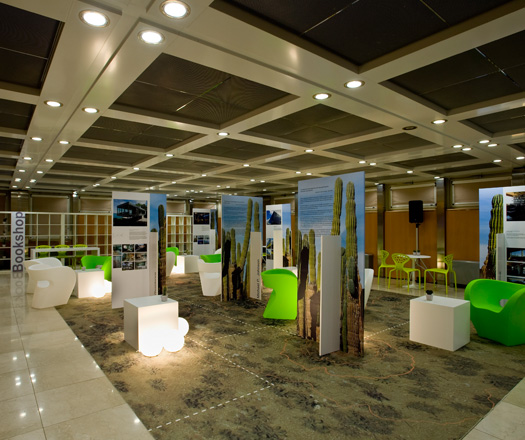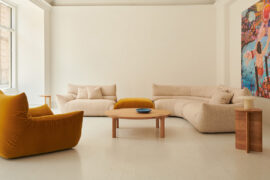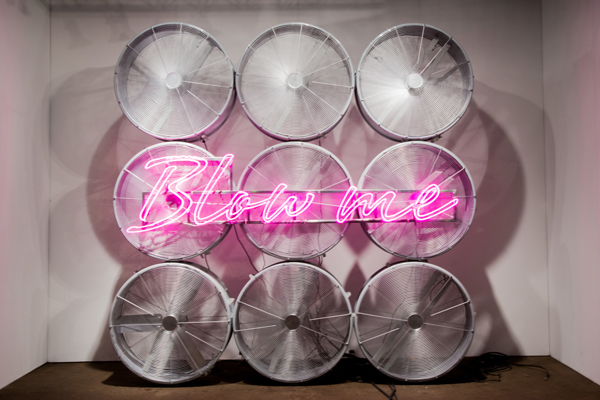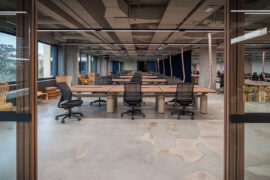The 2009 Cersaie Fair demonstrated an industry keen to get back to basics and explore design aesthetic, despite the economic downturn. Indesign’s Ali Festa reports.
October 7th, 2009
There was an introduction, more precisely a continuation of the colour black – Black matte basins were huge! The introduction was the mix of gloss and matte materials with the colour.
The biggest trend is the lighting within the shower heads. Australia has trouble supplying these type of shower heads due to our highly regulated environment and good on us for being so safe, BUT gosh some of these shower heads are cool, especially the ones recessed into the roof – looks like a waterfall pouring from your ceiling with mood lighting to finish it off (I’m relaxed just thinking about it).
There is an ongoing trend of fashioning the bathroom into a type of “wellness” space – a place that you don’t just go to clean yourself, but to relax, unwind, beautify and maintain your healthy body – an almost holistic approach.
My discussions on this with various people at the fair made me think that this trend is questionable for the Australian market due to our climate – in Europe they have to create spaces like this inside due to the weather especially in the colder months.
In Australia our wellness space is outside – we enjoy outdoor activities and would rather spend time on these things than inside spaces. Food for thought and a whole other conversation but interesting from a bathroom products point of view.
From the tile side of things the technology of digital printing was the big story of the fair – some companies achieving the look a lot better than others. It is basically a big printer that makes stone look natural but controls the patterns on the stone, which is impossible to do naturally (a very simple definition).
Another big trend is technology allowing the tile industry to produce extremely thin tiles and stone. The Trend group’s introduction to the refining of the application process of mosaics was interesting to learn about and they are a company that has found a way to overcome the main problem with laying mosaics but maintaining the same look.
All in all, given the current economic climate, Cersaie 2009 was not at all a disappointment, but showcased a bathroom furniture and tile industry bringing things back to the core of design and letting the stars of the show really shine.
Diary:
Day One
Day Two
Day Three
Day Four
Official Cersaie 2009 Website
cersaie.it

INDESIGN is on instagram
Follow @indesignlive
A searchable and comprehensive guide for specifying leading products and their suppliers
Keep up to date with the latest and greatest from our industry BFF's!

How can design empower the individual in a workplace transforming from a place to an activity? Here, Design Director Joel Sampson reveals how prioritising human needs – including agency, privacy, pause and connection – and leveraging responsive spatial solutions like the Herman Miller Bay Work Pod is key to crafting engaging and radically inclusive hybrid environments.

A curated exhibition in Frederiksstaden captures the spirit of Australian design

Gaggenau’s understated appliance fuses a carefully calibrated aesthetic of deliberate subtraction with an intuitive dynamism of culinary fluidity, unveiling a delightfully unrestricted spectrum of high-performing creativity.

The line between design and art blurs evocatively at the newly established Collective.1 Design Fair in New York. An exclusive report from New York by Stephen Ormandy of Dinosaur Designs.
The internet never sleeps! Here's the stuff you might have missed

New Australian modular seating brand, Knotte, has collaborated with Melbourne designer, Joanne Odisho, to develop its latest range, Almas. We asked her to tell us more.

Featuring designs by Studio Johnston, Sam Crawford Architects, SAHA and others, the NSW Pattern Book for low-rise homes is a milestone in housing design.

The client’s brief was clear: create an environment that honoured FIN’s heritage while embracing its future. For Intermain, that meant rejecting the idea of the corporate, “boring” office and instead leaning into a space that would inspire, connect, and surprise.